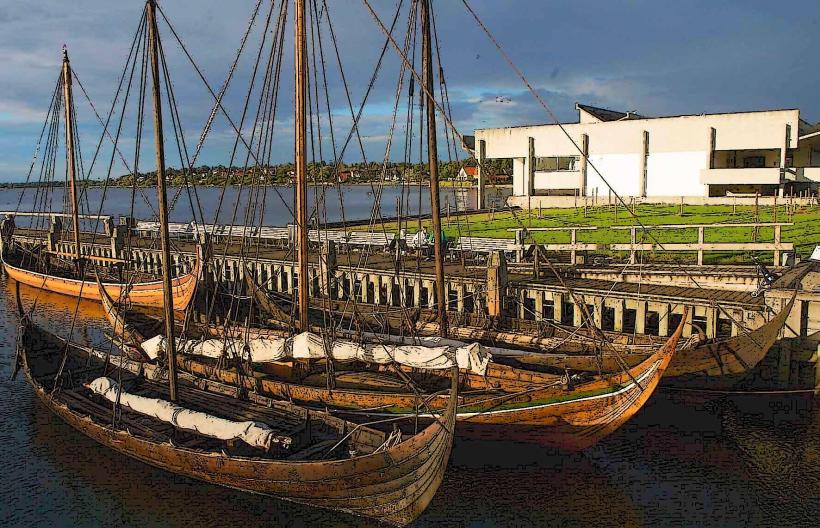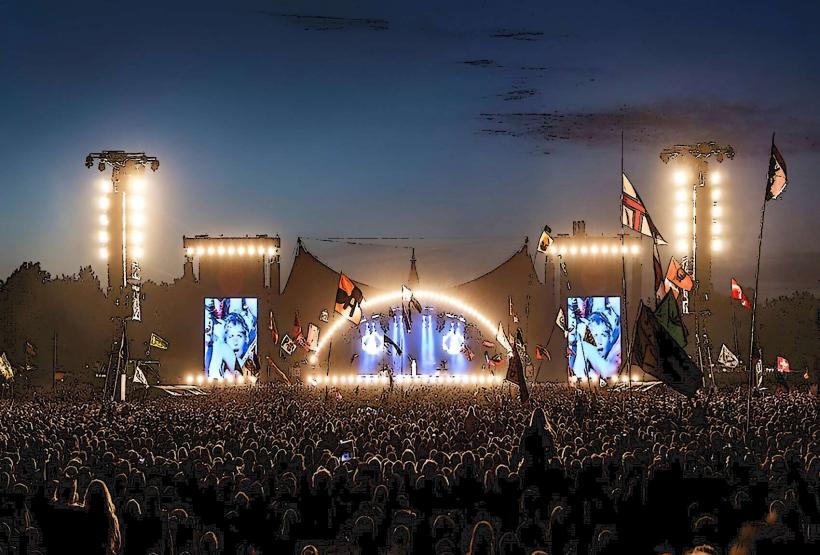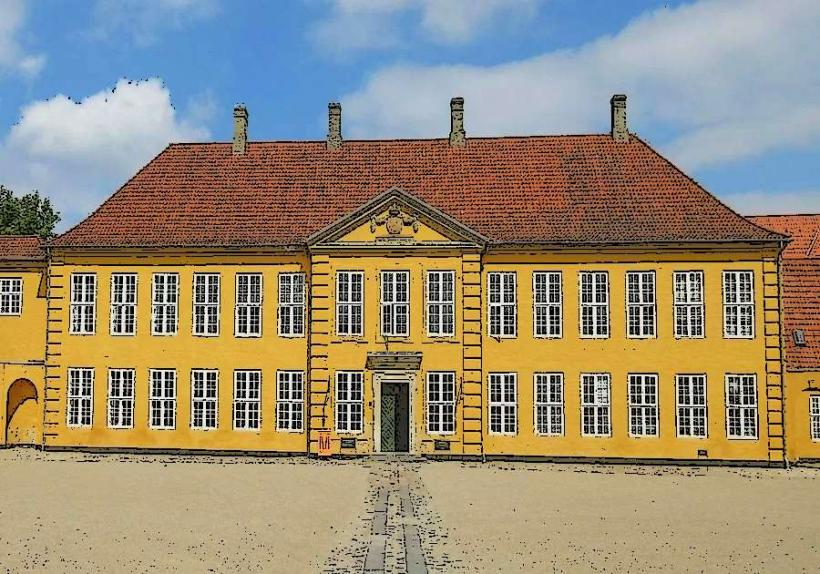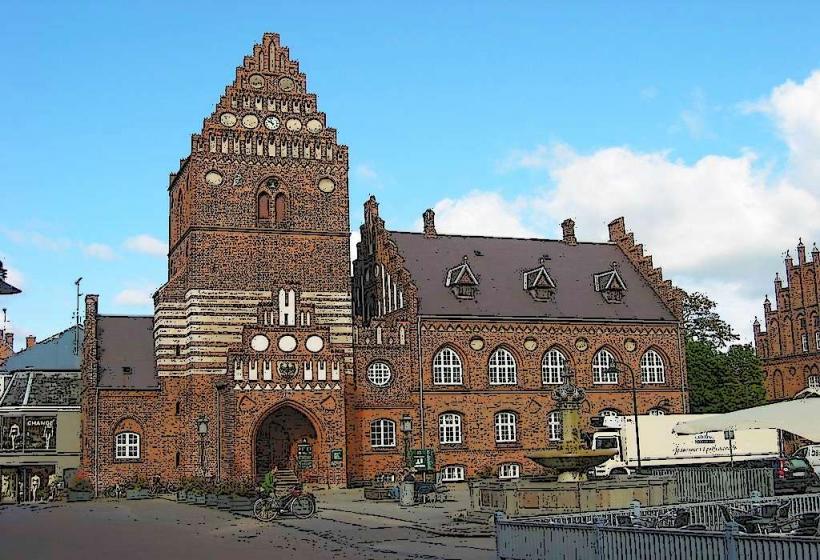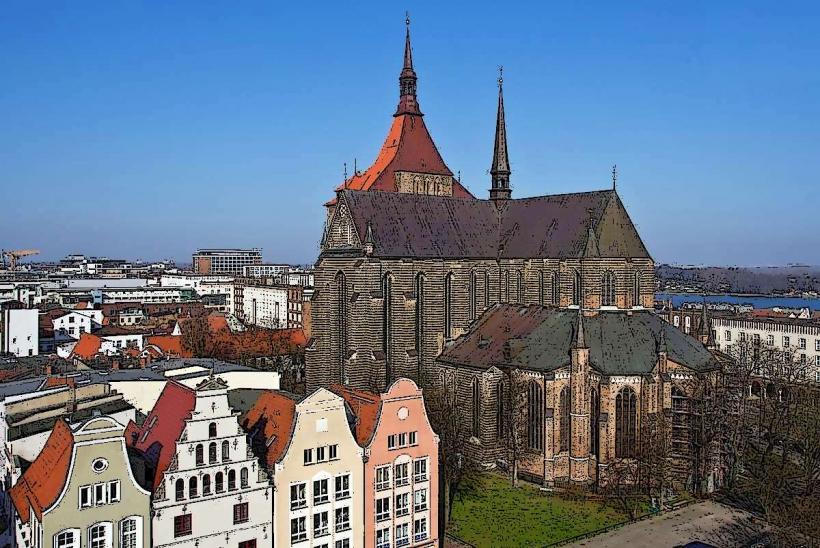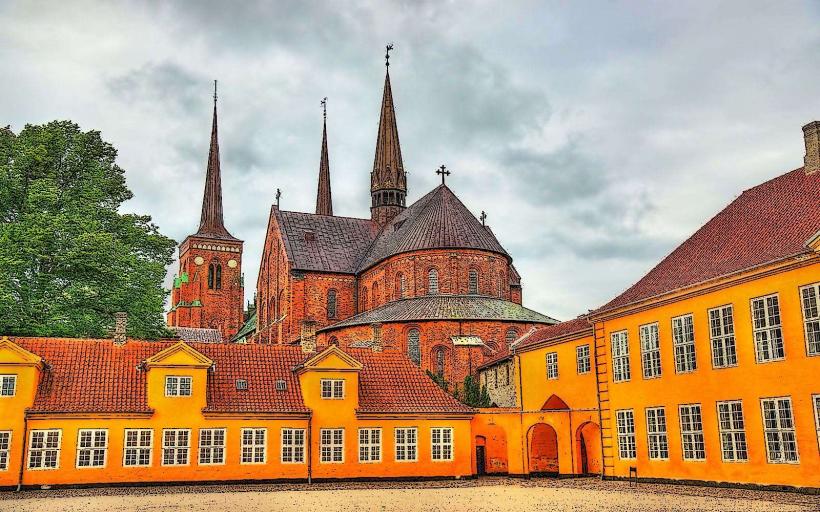Information
Landmark: Roskilde CathedralCity: Roskilde
Country: Denmark
Continent: Europe
Roskilde Cathedral, located in Roskilde, Denmark, is a significant historical and architectural landmark. It is a UNESCO World Heritage Site, recognized for its cultural value and its role as a royal burial site. Here's a detailed overview of the cathedral:
Historical Significance
Foundation and Early History:
- The first church on the site was built in the late 10th century, likely a wooden structure.
- Bishop Absalon, a key figure in Danish history, initiated the construction of the current brick church in the 12th century.
- It was among the first Gothic churches in Scandinavia built of brick, setting a precedent for the spread of the Brick Gothic style across the region.
UNESCO Recognition (1995):
- Roskilde Cathedral earned its place as a UNESCO World Heritage Site due to its architectural influence and its continuous use as the burial site for Danish monarchs.
Architecture
Gothic and Romanesque Features:
- The cathedral blends Romanesque and Gothic styles. The early Romanesque portions include the apse and transepts, while the Gothic influences are evident in the nave and towers.
Brick Gothic Style:
- The extensive use of red brick was innovative at the time and influenced church architecture throughout Northern Europe.
Towers:
- The twin spires are iconic features visible from afar, serving as landmarks for the town of Roskilde.
Interior:
- The cathedral's interior is noted for its vaulted ceilings, intricate carvings, and stained glass windows.
Royal Burial Site
Resting Place of Monarchs:
- Roskilde Cathedral has been the burial site of Danish kings and queens since the 15th century.
- Notable tombs include those of Queen Margrethe I, King Christian IV, and King Frederik IX.
Royal Chapels:
- Several chapels have been added over centuries, each reflecting the architectural styles of their time, such as Renaissance, Baroque, and Rococo.
Modern Royal Tombs:
- The burial place of modern monarchs, such as Queen Margrethe II, is planned within the cathedral.
Cultural Importance
Religious Role:
- It remains an active Lutheran church, hosting services and ceremonies.
- The cathedral played a central role in the Reformation in Denmark in the 16th century.
Tourism:
- It attracts visitors worldwide due to its historical significance and architectural splendor.
- The cathedral houses exhibitions on Danish history and royal traditions.
Surroundings and Accessibility
Location:
- Situated in the heart of Roskilde, it overlooks Roskilde Fjord, adding to its picturesque setting.
Nearby Attractions:
- Roskilde Museum and the Viking Ship Museum are close by, making it part of a rich cultural itinerary.
Accessibility:
- The site is easily accessible by train from Copenhagen, approximately a 30-minute journey.
UNESCO Citation
UNESCO recognized Roskilde Cathedral as an exceptional example of the evolution of European religious architecture and as a symbol of Denmark’s historical continuity and identity.

